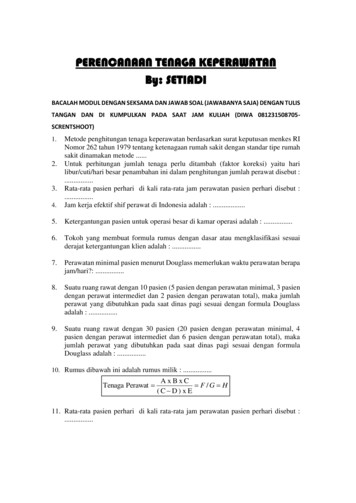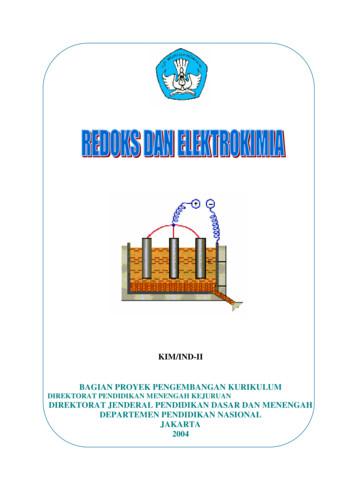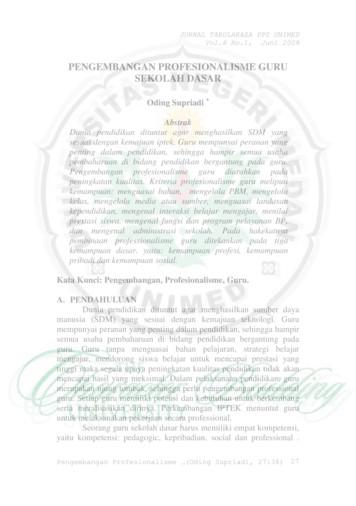Design And Test Traffic Jam Assist, A Case Study
Automated Driving System ToolboxDesign and Test Traffic Jam Assist, A Case StudySeo-Wook ParkPrincipal Application Engineer 2018 The MathWorks, Inc.1
Evolution of ADAS/Autonomous Driving CarL5Full AutomationSelf-Driving CarL4High AutomationSelf-Driving & Human-Driven CarAuto Pilot: Road TrainL3ConditionalAutomationAuto Pilot: ParkingAuto Pilot: HighwayL2AutoPilot: TrafficJam AssistTrafficJam AssistPartial AutomationJunction AssistAEB-VRU (Cyclist)L1AEB-VRU (Pedestrian)DriverAssistanceLane Keep Assist/Lateral SupportAEB-Vehicle (City/Inter-Urban)ACCL0FCWFCW,LDWNo Automation20102014201620182020202520302
ACC and Lane Following Control for Traffic Jam AssistTraffic Jam AssistACCLane FollowingControlTraffic Jam Assist3
Traffic Jam Assist It helps drivers to follow the preceding vehicleautomatically with a predefined time intervalin a dense traffic condition while controlling steering for keeping current lane. Longitudinal control withACC with stop & goLateral control withlane followingPartial/conditional automation at level 2/3– Speed limit 60 65 km/h– Dense traffic condition in highway4
Automated Driving System ToolboxDesign and Test Traffic Jam Assist, A Case studyTest caseRun testresultC/C Design ACC and LaneFollowing Controller Create driving scenarioSynthesize sensor detectionInclude Vehicle DynamicsDesign sensor fusion algorithmDesign controller using MPCAutomate RegressionTest Define performanceevaluation metricsDevelop test casesBuild test suitesVerification and validationGenerate and VerifyCode SIL testCode generationCoverage test5
ACC Performance Requirements 15622Ego velocity control : 𝑣 𝑣𝑠𝑒𝑡𝑐𝜏 𝑣𝑐where, 𝑣 : ego velocity, 𝑣𝑠𝑒𝑡 : set velocity Time gap control:where, 𝜏 𝜏 𝜏𝑚𝑖𝑛𝑐: time gap 1.5 . 2.2 sec𝑣𝜏𝑚𝑖𝑛 : min time gap 0.8 sec 𝑣Subject vehicle(host vehicle, ego vehicle)Forward vehicle(lead vehicle)ACC operation limits– Minimum operational speed, 𝑣𝑚𝑖𝑛 5m/s– Average automatic deceleration of ACC 3.5 m/s2 (average over 2s)– Average automatic acceleration of ACC 2.0 m/s26
Lane Following Performance Requirements Vehicle should follow the lane center with allowable lateral deviation.(𝑑𝑙𝑒𝑓𝑡 𝑑𝑟𝑖𝑔ℎ𝑡 )/2 𝑒𝑚𝑎𝑥Lane Markingwhere,𝑑𝑙𝑒𝑓𝑡 : lateral offset of left lane w.r.t. ego car𝑑𝑙𝑒𝑓𝑡Lane CenterLane Width2𝑒𝑚𝑎𝑥Vehicle � : lateral offset of right lane w.r.t. ego car𝑒𝑚𝑎𝑥 : allowable lateral deviationFor example, 𝑒𝑚𝑎𝑥 (𝐿𝑎𝑛𝑒𝑊𝑖𝑑𝑡ℎ 𝑉𝑒ℎ𝑖𝑐𝑙𝑒𝑊𝑖𝑑𝑡ℎ)/2 (3.6-1.8)/2 0.9 m7
Create Test Scenario using Driving Scenario DesignerTest DescriptionLead car cut in and out in curved highway(curvature of road 1/500 m)Host carinitial velocity 20.6m/sHWT(Headway Time) to lead car 4secHW(Headway) to lead car 80mv set(set velocity for ego car) 21.5m/sLead CarInitially, fast moving car (orange) at 19.4m/sPassing car (yellow) at 19.6m/s cut in the egopath with HWT 2.3s, then cut outThird CarSlow moving car (purple) at 11.1m/sin the 2nd lane8
Simulation with Simulink Model for Traffic Jam AssistTest DescriptionLead car cut in and out in curved highway(curvature of road 1/500 m)Host carinitial velocity 20.6m/sHWT(Headway Time) to lead car 4secHW(Headway) to lead car 80mv set(set velocity for ego car) 21.5m/sLead CarInitially, fast moving car (orange) at 19.4m/sPassing car (yellow) at 19.6m/s cut in the egopath with HWT 2.3s, then cut outThird CarSlow moving car (purple) at 11.1m/sin the 2nd lane9
Simulation with Simulink Model for Traffic Jam AssistTest DescriptionLead car cut in and out in curved highway(curvature of road 1/500 m)Ego VelocityHost carinitial velocity 20.6m/sHWT(Headway Time) to lead car 4secHW(Headway) to lead car 80mv set(set velocity for ego car) 21.5m/sTime GapLead CarInitially, fast moving car (orange) at 19.4m/sPassing car (yellow) at 19.6m/s cut in the egopath with HWT 2.3s, then cut outThird CarSlow moving car (purple) at 11.1m/sin the 2nd laneEgo AccelerationLateral Deviation10
Architecture for ACC and Lane Following ControllerRadarDetectionVisionDetectionSensor Fusionand TrackingFindLead CarAcceleration(Longitudinal)Vehicle and EnvironmentDriving Lane l)EgoLongitudinalVelocityRadar, Vision,Lane DetectionGenerator11
Architecture for ACC and Lane Following onSensor Fusionand TrackingAcceleration(Longitudinal)FindLead CarModelPredictiveControl(MPC)EstimateLane CenterPreviewCurvatureVehicle and EnvironmentDriving itudinalVelocityRadar, Vision,Lane DetectionGenerator12
What is model predictive control (MPC)? Multi-variablecontrol strategyleveraging an internalmodel to predict plantbehavior in the nearfutureOptimizes for thecurrent timeslot whilekeeping futuretimeslots in account Mature control solutionused in industrialapplications Gaining popularity inautomated drivingapplications to improvevehicle responsivenesswhile maintainingpassenger comfortHidden ConnectorOptimizerPlantModelHidden ConnectorMPC controller13
What is model predictive control (MPC)?Measured outputsHidden ConnectorOptimizerReferencesPlantModelManipulated variablesEgoVehicleHidden ConnectorMPC controllerMeasured disturbances14
How can MPC be applied to ACC?and lane following control?𝐦𝐢𝐧𝐢𝐦𝐢𝐳𝐞:𝒘𝟏 𝑽𝒆𝒈𝒐 𝑽𝒔𝒆𝒕𝟐 𝒘𝟐 𝑬𝒍𝒂𝒕𝒆𝒓𝒂𝒍𝟐References Ego velocity set point (𝑉𝑠𝑒𝑡 ) Target lateral deviation ( 0)Measured disturbances MIO velocity (𝑉𝑚𝑖𝑜 ) Previewed road curvature (𝜌)𝐬𝐮𝐛𝐣𝐞𝐜𝐭 𝐭𝐨:𝑫𝒓𝒆𝒍𝒂𝒕𝒊𝒗𝒆 𝑫𝒔𝒂𝒇𝒆𝒂𝒎𝒊𝒏 𝒂 𝒂𝒎𝒂𝒙𝜹𝒎𝒊𝒏 𝜹 𝜹𝒎𝒂𝒙Hidden ConnectorOptimizerEgo VehicleModelHidden ConnectorMPC controller𝑉𝑒𝑔𝑜 , 𝑎Measured outputs Relative distance (𝐷𝑟𝑒𝑙𝑎𝑡𝑖𝑣𝑒 ) Ego velocity (𝑉𝑒𝑔𝑜 ) Lateral deviation (𝐸𝑙𝑎𝑡𝑒𝑟𝑎𝑙 ) Relative yaw angle (𝐸𝑦𝑎𝑤 )EgoVehicleManipulated variables Acceleration (𝑎) Steering angle ��𝑎𝑤𝜌15
Internal MPC model for ACC and Lane Following Controller𝑉𝑥 , ��𝑒Longitudinal model for ACCMeasured outputs (OV) Relative distance (𝐷𝑟𝑒𝑙𝑎𝑡𝑖𝑣𝑒 ) Ego velocity (𝑉𝑒𝑔𝑜 ) Lateral deviation (𝐸𝑙𝑎𝑡𝑒𝑟𝑎𝑙 ) Relative yaw angle (𝐸𝑦𝑎𝑤 �𝑎𝑉𝑚𝑖𝑜 𝑠𝑦𝑠𝛿𝜌Manipulated variables (MV) Acceleration (𝑎) Steering angle (𝛿)Measured disturbance (MD) MIO velocity (𝑉𝑚𝑖𝑜 ) Previewed road curvature (𝜌)Lateral model for Lane 𝑦𝑎𝑤𝜑𝜌X16
Longitudinal and Lateral Model for MPC Longitudinal Model for 𝑎𝑡𝑖𝑣𝑒1 𝜏 10𝐷𝑟𝑒𝑙𝑎𝑡𝑖𝑣𝑒0 0 1 𝑉𝑥0 1 0 𝑉𝑥ሶ𝑉𝑥0 00 0 1 0𝐷𝑟𝑒𝑙𝑎𝑡𝑖𝑣𝑒𝑉𝑥 , 𝑎1𝐷𝑟𝑒𝑙𝑎𝑡𝑖𝑣𝑒0𝑎 0 0 𝑉𝑚𝑖𝑜0 1𝜏𝑉𝑥ሶ𝑉𝑥y𝑑𝑑𝑡 ���𝑟𝑒𝑙𝑎𝑡𝑖𝑣𝑒2𝐶𝑓 2𝐶𝑟 𝑚𝑉𝑥 2𝐶𝑓 𝑙𝑓 2𝐶𝑟 𝑙𝑟𝐼𝑧 𝑉𝑥102𝐶𝑓 𝑙𝑓 2𝐶𝑟 𝑙𝑟 𝑉𝑥 𝑚𝑉𝑥2𝐶𝑓 𝑙𝑓2 2𝐶𝑟 𝑙𝑟2 𝐼𝑧 𝑉𝑥0100x𝐹𝑟Lateral Model for Lane Following𝑉𝑦𝜑ሶ𝑉𝑚𝑖𝑜𝜑00 𝑉𝑥0 ��𝑦𝑎𝑤2𝐶𝑓𝑚2𝐶𝑓 𝑙𝑓 𝐼𝑧00𝛿000 1𝑙𝑟𝛿𝑉𝑥 ��𝑟𝑎𝑙0 0 1 0 𝐸𝑦𝑎𝑤0 0 0 1 𝑎𝑤𝜑𝜌X17
Automated Driving System ToolboxDesign and Test Traffic Jam Assist, A Case studyTest caseRun testresultC/C Design ACC and LaneFollowing Controller Create driving scenarioSynthesize sensor detectionInclude Vehicle DynamicsDesign sensor fusion algorithmDesign controller using MPCAutomate RegressionTest Define performanceevaluation metricsDevelop test casesBuild test suitesVerification and validationGenerate and VerifyCode SIL testCode generationCoverage test18
Simulation result assessmentTest DescriptionLead car cut in and out in curved highway(curvature of road 1/500 m)Ego VelocityHost carinitial velocity 20.6m/sHWT(Headway Time) to lead car 4secHW(Headway) to lead car 80mv set(set velocity for ego car) 21.5m/sTime Gap𝜏 𝜏𝑚𝑖𝑛Lead CarInitially, fast moving car (orange) at 19.4m/sPassing car (yellow) at 19.6m/s cut in the egopath with HWT 2.3s, then cut outThird CarSlow moving car (purple) at 11.1m/sin the 2nd laneEgo AccelerationLateral Deviation𝑙𝑎𝑡𝑒𝑟𝑎𝑙 𝑑𝑒𝑣𝑖𝑎𝑡𝑖𝑜𝑛 𝑒𝑚𝑎𝑥19
Performance IndicatorLane Followingperformance indicator𝑙𝑎𝑡𝑒𝑟𝑎𝑙 𝑑𝑒𝑣𝑖𝑎𝑡𝑖𝑜𝑛 𝑒𝑚𝑎𝑥𝑒𝑚𝑎𝑥𝑐𝑐𝜏 𝑣𝑣ACC performance indicator𝜏 𝜏𝑚𝑖𝑛𝜏𝑚𝑖𝑛 0.8𝑠𝑒𝑐20
Performance IndicatorLane Followingperformance indicator𝑙𝑎𝑡𝑒𝑟𝑎𝑙 𝑑𝑒𝑣𝑖𝑎𝑡𝑖𝑜𝑛 𝑒𝑚𝑎𝑥𝑒𝑚𝑎𝑥𝑐𝑐𝜏 𝑣ACC performance indicator𝜏 𝜏𝑚𝑖𝑛𝑣𝜏𝑚𝑖𝑛 0.8𝑠𝑒𝑐Pass Criteria:1. ACC space control capability (𝝉 𝝉𝐦𝐢𝐧 )2. Lane following capability3. No collision detected21
Performance indicator and dashboard in Simulink model22
HW : HeadwayHWT : Headway timev set : set velocity for ego carTest scenarios (1/4)No Test Name1 ACC 01 ISOTargetDiscriminationTestTest DescriptionHost carLead carinitial velocity 30m/s constant accel 24m/s 27m/s @ 2m/s2HWT 2.2sec(HW 66m)Vend 27m/s (97.2kph)Target Discrimination Test1Third car24m/sSpecISO 15622ISO 22178noneISO 22178constantspeed 2.1m/sISO 221782v set 30m/s3 2m/s22 ACC 02 ISOAutoDecelTestinitial velocity 15m/s initial velocity 13.9m/sAutomatic Deceleration Test1HWT 2.2sec(HW 33m)2v set 15m/sdecelerates to full stop with2.5m/s2stop-2.5m/s23 ACC 03 ISOAutoRetargetTestAutomatic Retargeting Capability TestHWT 3s123initial velocity 15m/s initial velocity 13.9m/sHWT 2.2sec(HW 33m)Lead car changes lane @HWT 3s to overtake slowmoving carv set 15m/s23
HW : HeadwayHWT : Headway timev set : set velocity for ego carTest scenarios (2/4)No Test Name4 ACC 04 ISOCurveTestTest DescriptionCurve Capability Test(curvature of test track 1/500 m)Host carLead carinitial velocity 31.6m/s initial velocity 31.6m/sHWT 1.5sec(HW 47.4m)v set 31.6m/sThird carnoneSpecISO 15622ISO 22178Drive at a constant speed for10s,decrease speed by 3.5m/s in2s, and keep it constant.𝑅-1.75m/s25 ACC 05 StopnGoStop and Go in highwayinitial velocity 27m/s initial velocity 27m/sHWT 1.5sec(HW 40.5m)v set 27m/sLead car slows down to15m/s at -3m/s2 and stayconstant for 7s, then speedup to 25m/s at 2.5m/s28 slow moving Real-worldcars at 12m/s scenarioin the secondlane 2.5m/s2-3m/s224
HW : HeadwayHWT : Headway timev set : set velocity for ego carTest scenarios (3/4)No Test Name6 LFACC 01 DoubleCurveDecelTargetTest DescriptionAutomatic Deceleration TestHost carLead carinitial velocity 22m/s initial velocity 22m/sHWT 2sec(HW 44m)(Similar with ACC 04 ISOCurveTest)v set 22m/sThird carnoneSpecReal-worldscenarioDrive at a constant speed forabout 11s,decrease speed by 3.5m/s in2s (deceleration: -1.8 m/s2)and keep it const.-1.8m/s27 LFACC 02 DoubleCurveAutoRetarget TooSlowAutomatic Retargeting Capability Testinitial velocity 15m/s initial velocity 13.9m/sHWT 2.8sec(HW 43m)(Similar with ACC 03 ISOAutoRetargetTest)Lead car changes lane @HWT 3s to overtake slowmoving carSlow moving ISO 22178car atconstantspeed 2.1m/sv set 15m/s8 LFACC 03 DoubleCurveAutoRetarget(Similar with ACC 03 ISOAutoRetargetTest)Automatic Retargeting Capability Testinitial velocity 15m/s initial velocity 13.9m/sHWT 2.8sec(HW 43m)Lead car changes lane @HWT 3s to overtake slowmoving carSlow moving ISO 22178car atconstantspeed 10m/sv set 15m/s25
HW : HeadwayHWT : Headway timev set : set velocity for ego carTest scenarios (4/4)No Test Name9 LFACC 04 DoubleCurveStopnGoTest DescriptionStop and Go in curved highwayHost carLead carinitial velocity 14m/s initial velocity 14m/sHWT 3.6sec(HW 50m)(Similar withACC 05 StopnGo)v set 14m/sThird carSpec10 slowReal-worldmoving cars scenarioLead car slows down to 8m/s at 8m/s in theat -1.7m/s2 and stay constant 3rd lanefor 10s, then speed up to13m/s at 1.3m/s23 fast movingcars at 15m/sin the 1st lane 1.3m/s2-1.7m/s210LFACC 05 CurveCutInOutLead car cut in and out in curved highway(curvature of road 1/500 m)initial velocity 20.6m/s Initially, fast moving car(orange) at 19.4m/sHWT 4sec(HW 80m)Passing car (yellow) at19.6m/s cut in the ego pathv set 21.5m/swith HWT 2.3s,then cut outSlow moving Real-worldcar (purple) at scenario11.1m/s in the2nd laneRepresentative test scenario11LFACC 06 CurveCutInOut TooCloseLead car cut in and out in curved highway(curvature of road 1/500 m)initial velocity 20.6m/s Initially, fast moving car(orange) at 19.4m/sHWT 4sec(HW 80m)Passing car (yellow) at19.6m/s cut in the ego pathv set 21.5m/swith HWT 1.5s,then cut outSlow moving Real-worldcar (purple) at scenario11.1m/s in the2nd lane26
Test Manager in Simulink Test Automate Simulink model testing using test cases with pass-fail criteriaTest file.mldatxTest suiteLoad testcaseTest case.slmxRun testRequirementslinksSimulationGenerateData Inspector ReportTest caseTest suiteProcessresults27
Requirements EditorRequirements descriptionList of RequirementsTest result status reflectedin Requirements Editor28
Test Report with baseline parameter set for 11 test casesNote) Baseline parameter set was tunedbased on a single test scenario.#1029
Fine-tune control parameters (1/3)Test DescriptionAutomatic Retargeting Capability TestHWT 3s123Host carinitial velocity 15m/sHWT 2.2sec (HW 33m)v set 15m/sLead Carinitial velocity 13.9m/sLead car changes lane @ HWT 3s toovertake slow moving carThird Carconstant speed 2.1m/sSpecISO 2217830
Fine-tune control parameters (1/3)Test DescriptionAutomatic Retargeting Capability TestHWT 3s123Ego VelocityHost carinitial velocity 15m/sHWT 2.2sec (HW 33m)v set 15m/sLead Carinitial velocity 13.9m/sRelative DistanceLead car changes lane @ HWT 3s toovertake slow moving carThird Carconstant speed 2.1m/sAfterTime GapSpecISO 22178BeforeEgo Acceleration31
Fine-tune control parameters (2/3)Test DescriptionStop and Go in highwayHost carinitial velocity 27m/sHWT 1.5sec (HW 40.5m)v set 27m/sLead Carinitial velocity 27m/sThird Car8 slow moving cars at 12m/sin the second laneSpecReal-world scenario32
Fine-tune control parameters (2/3)Test DescriptionStop and Go in highwayEgo VelocityAfterHost carinitial velocity 27m/sHWT 1.5sec (HW 40.5m)v set 27m/sLead Carinitial velocity 27m/sRelative DistanceBeforeTime GapThird Car8 slow moving cars at 12m/sin the second laneSpecReal-world scenarioEgo Acceleration33
Fine-tune control parameters (3/3)Test DescriptionAutomatic Retargeting Capability TestHost carinitial velocity 15m/sHWT 2.8sec (HW 43m)v set 15m/sLead Carinitial velocity 13.9m/sLead car changes lane @ HWT 3s toovertake slow moving carThird CarSlow moving car at constant speed,2.1m/sSpec ISO 2217834
Fine-tune control parameters (3/3)Test DescriptionAutomatic Retargeting Capability TestEgo VelocityHost carinitial velocity 15m/sHWT 2.8sec (HW 43m)v set 15m/sLead Carinitial velocity 13.9m/sRelative DistanceTime GapAfterLead car changes lane @ HWT 3s toovertake slow moving carThird CarSlow moving car at constant speed,2.1m/sBeforeEgo AccelerationSpec ISO 2217835
Baseline vs. Fine-tuned parametersParameter ion assignment threshold formultiObjectTracker5020time gapACC time gap (sec)1.52.0default spacingACC safe distance margin (m)010min acMinimum acceleration (m/s 2)-3.0-3.536
Test Report with fine-tuned parameter set for 11 test cases37
Automated Driving System ToolboxDesign and Test Traffic Jam Assist, A Case studyTest caseRun testresultC/C Design ACC and LaneFollowing Controller Create driving scenarioSynthesize sensor detectionInclude Vehicle DynamicsDesign sensor fusion algorithmDesign controller using MPCAutomate RegressionTest Define performanceevaluation metricsDevelop test casesBuild test suitesVerification and validationGenerate and VerifyCode SIL testCode generationCoverage test38
Simulation with SIL mode39
Code Generation Report40
Aggregated Code Coverage Report41
Automated Driving System ToolboxDesign and Test Traffic Jam Assist, A Case studyTest caseRun testresultC/C Design ACC and LaneFollowing Controller Create driving scenarioSynthesize sensor detectionInclude Vehicle DynamicsDesign sensor fusion algorithmDesign controller using MPCAutomate RegressionTest Define performanceevaluation metricsDevelop test casesBuild test suitesVerification and validationGenerate and VerifyCode SIL testCode generationCoverage test42
Email: seo-wook.park@mathworks.com43
Seo-Wook Park Principal Application Engineer. 2 Evolution of ADAS/Autonomous Driving Car L0 No Automation FCW, LDW L1 Driver Assistance ACC AEB-Vehicle (City/Inter-Urban) Lane Keep Assist/Lateral Support AEB-VRU (Pedestrian) AEB-VRU (Cyclist) Junction Assist L2 Partial Automation Auto Pilot: Traffic Jam Assist L3
- keperawatan tidak langsung 15 orang klien : 5 x 1 jam 15 jam - penyuluhan kesehatan 15 orang klien : 15 x 0,25 jam 3,75 jam Jadi total jam keperawatan secara keseluruhan adalah 73,75 jam Menentukan jumlah jam keperawatan per klien per hari 73,75 jam / 15 klien 4,9 jam b. .
SA Learner Driver Manual Road Traffic Signs Version: Draft Page 1 of 56 2. ROAD TRAFFIC SIGNS, SIGNALS AND MARKINGS The purpose of road traffic signs is to regulate traffic in such a way that traffic flow and road traffic safety are promoted. 1. SIGNS IN GENERAL Road traffic signs can be divided into the following six main groups:
Chapter 4. Traffic Data Analysis for Design Traffic Forecasts 1.3 10/24/18 Chapter 5. Design Traffic Forecasting Process, Standards, and Documentation 1.3 10/24/18 Chapter 6. Design Traffic Forecasting Tools and Conventions 1.4 10/24/18 Chapter 7. Required Standards and Formats for Design Traffic Deliverables 1.3 10/24/18 Chapter 8.
Visit HOT97.com for information about the HOT 97 Summer Jam ticket pre-sale and to relive the best HOT 97 Summer Jam moments. Tickets go on-sale to the public Friday, June 25, 2021, at 10:00 a.m. ET at Ticketmaster. A portion of the HOT 97 Summer Jam ticket proceeds benefit the Hip Hop Has Heart Foundation for local community programs and .
Strawberry Jam ANDOVER FABRICS Very Berry Quilt designed by Janet Houts Quilt Size: 68" x 80" andoverfabrics.com About Strawberry Jam Our new line, Strawberry Jam, is as sweet as can be! Tossed strawberries, mini dots and orals are the per
Konsep elektrokimia Proses elektrokimia 4 jam 20 jam KBM-3 Konsep elektrolisis Proses elektrolisis 10 jam 20 jam B. Kegiatan Belajar Tujuan Kegiatan Pembelajaran 1 Setelah mempelajari uraian materi pada kegiatan belajar I ini, anda diharapkan dapat : 1. Menjelaskan pengertian oksidasi dan reduksi yang melibatkan oksigen 2.
Bahasa Daerah, KTK) Penjaskes, dan PAI disajikan oleh guru bidang. Guru sekolah dasar yang mengajar di kelas 5 –6 setiap minggu melaksanakan mengajar sebanyak 38 jam pelajaran, untuk guru kelas 4 36 jam pelajaran, dan guru kelas 1 dan 2 sebanyak 24 jam pelajaran. Sedangkan guru sekolah lanjutan hanya bertugas sebanyak 18 jam
1. Konsep dasar penilaian kinerja 1 jam 2. Kompetensi, peran dan kinerja guru 1 jam 3. Aspek-aspek dan instrumen penilaian kinerja guru 2 jam 4. Pelaksanaan penilaian dan analisis data hasil penilaian kinerja kepala sekolah 2 jam 5.























